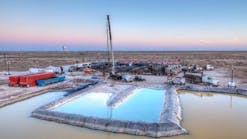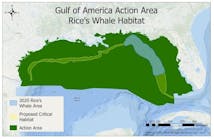Although fire fighting teams have controlled 200 Kuwaiti oil well fires, 532 continue to burn.
Saud Nassir Al-Sabah, Kuwait's ambassador to the U.S., told a Senate committee retreating Iraqi troops set 732 Kuwaiti oil wells afire, a larger number than estimated earlier. A United Nations mission to Kuwait said about 700 wells were blazing last April, including wells in the Neutral Zone where production is shared 50-50 by Kuwait and Saudi Arabia (OGJ, July 15, p. 36).
Al-Sabah told the Senate Persian Gulf Pollution Task Force his government hopes to have 500 well fires killed by the first of the year and almost all of the remaining 232 doused by next March.
He said, "We have asked well fighting companies to double and triple their teams." He disputed recent allegations by Houston fire fighter Paul (Red) Adair that the Kuwaiti operation has been "Mickey Mouse."
Al-Sabah said, "We have not left one stone unturned around the world to find a way to put those fires out. We are spending millions of dollars every day."
FIRE FIGHTING BUILDUP
E.L. Shannon, chairman of Kuwaiti owned Santa Fe International Corp. which is overseeing the well fighting effort for Kuwait, told the senators 12 fire fighting teams are in operation and eventually 24 teams, representing seven companies, will be on the scene. Shannon said 7,000 persons are engaged in fire fighting efforts, and that number will grow to 10,000 within 4 months.
He said fire fighters have just turned to attacking the big fires, "those burning 20,000-30,000 b/d."
He admitted there were some delays at first because the Kuwaiti government was dislocated and short handed but insisted, "The Kuwaiti government has never been unwilling to spend the money to fight the well fires. They just want it spent properly.
"Santa Fe has seen considerable evidence that their concern is realistic. For civil works, for example, bids we received ranged from $25.5 million up to $96 million for the identical equipment."
"Damage to the oil sector was not only widespread, it was also nearly impossible to assess. For almost 2 months after liberation, because of the heavy smoke overcast resulting from the fires, together with the lack of surface access due to damaged and oil flooded roads, an accurate count and evaluation of the burning and damaged wells were impossible.
"Previously, the largest number of fires in the same field at the same time was Libya in 1965, when five fires occurred. In Kuwait, the problem is more than 100 times as large. Moreover, because of the lack of a meaningful infrastructure and the hazards presented by unexploded ordnance, the Kuwaiti challenge was different not only in scope but in kind from anything seen before. To some extent, everyone involved in the effort is writing on a blank slate."
Shannon said Kuwait Petroleum Co. (KPC) also has formed a task force to evaluate some "800 separate proposals for unconventional methods of oil well fire fighting ranging from doming, to tunneling, to crimping or crushing, to robotics, to chemicals, and a variety of others."
Meanwhile, Santa Fe is moving 10 rigs costing $123 million to Kuwait. They will be used in an oil field workover and drilling program to restore production levels.
The workover and drilling program has targeted an oil production level of 220,000 b/d within the next 90 days and 500,000 b/d by yearend.
Shannon said Texaco, operator of Wafra oil field in the Neutral Zone, has agreed to expand its operation to restore the field, "encompassing securing of wells and reestablishment of production facilities."
Shannon said within 6 weeks KPC will install a 40 bed field hospital with burn facilities just for the well fighters. So far, no one fighting a well has been killed.
Sen. Joseph Lieberman (D-Conn.), task force chairman, said the panel has arranged for 74,000 D-8 Caterpillar vehicles needed in the fire fighting effort to be shipped to Kuwait on Air Force C-5A transports. By Aug. 1, the Air Force will move 30 Caterpillars, and KPC will pay for the flights.
The task force was negotiating to station U.S. Medevac helicopters in the oil fields for possible emergency use by U.S. fire fighters.
Copyright 1991 Oil & Gas Journal. All Rights Reserved.

